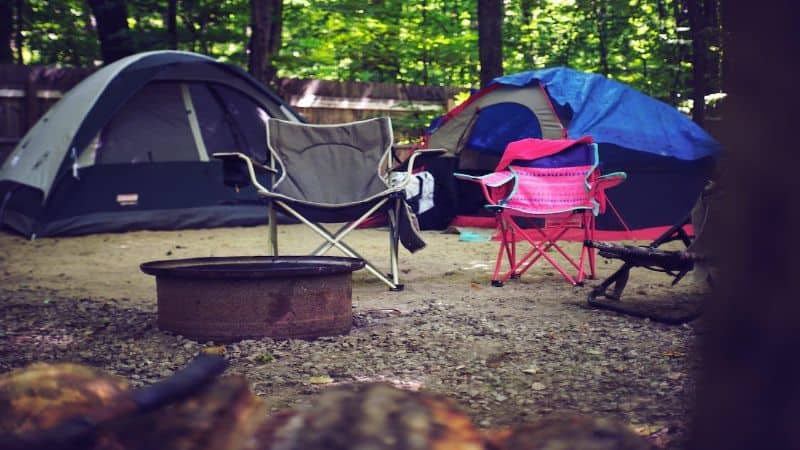There’s something magical about camping in Shenandoah National Park. The moment you step into this stunning landscape, you’re greeted by rolling mountains, lush forests, and breathtaking views that stretch for miles. Whether you’re a seasoned camper or just looking to escape the hustle and bustle of everyday life, Shenandoah offers a perfect retreat into nature.
Overview of Shenandoah National Park
Shenandoah National Park spans over 200,000 acres in Virginia’s Blue Ridge Mountains. It showcases stunning landscapes, such as steep ridges, diverse forests, and picturesque waterfalls. I’m often amazed by the park’s rich biodiversity, offering habitats for countless wildlife species like deer, black bears, and numerous bird varieties.
The park features Skyline Drive, a scenic route that runs 105 miles along the crest of the mountains. My favorite stops along this drive include breathtaking overlooks that provide expansive views of the Shenandoah Valley and surrounding peaks. Whether it’s during the vibrant fall foliage or the lush green of summer, the scenery captivates me every time I visit.
Shenandoah also boasts over 500 miles of hiking trails. I particularly enjoy hiking the Appalachian Trail, which traverses the park, providing a sense of adventure and connection with nature. These trails vary in difficulty, accommodating both novice and experienced hikers alike.
Waterfalls like Dark Hollow Falls and Whiteoak Canyon cascade through the park, adding an extra touch of beauty. Fishing is permitted in many streams, offering a chance to catch native brook trout. The tranquility of fishing in these serene waters becomes an escape for me, perfectly complemented by the surrounding wilderness.
Each visit brings new opportunities for outdoor activities, such as camping under the stars, observing wildlife, or simply soaking in the peaceful ambiance of nature. Shenandoah National Park remains a cherished destination for me, promising adventure and serenity in equal measure.
Preparing for Your Camping Trip
Preparing for a trip in Shenandoah National Park involves careful planning and packing to ensure an enjoyable experience. The right gear and clothing make a significant difference in comfort and safety.
Essential Gear and Supplies
- Tent: A reliable tent protects against the elements. Choose a model suited for the season and group size.
- Sleeping Bag: Select a sleeping bag rated for temperatures you expect. A three-season bag typically works well for Shenandoah’s varying weather.
- Cooking Equipment: A portable stove, fuel, and cooking utensils are essential. I often pack lightweight pots and a portable grill for versatility.
- Food and Water: Plan meals ahead and bring non-perishable foods. A water filtration system or purification tablets ensures access to safe drinking water.
- First Aid Kit: A well-stocked first aid kit addresses minor injuries. Essentials include bandages, antiseptic wipes, and pain relievers.
- Navigation Tools: A map and compass are crucial, though GPS devices can supplement these. I always bring a backup method to navigate the trails.
- Multi-Tool or Knife: A sturdy multi-tool aids in various tasks, from food prep to repairs, making it a must-have.
- Flashlight or Headlamp: A reliable light source is key for safety at night. Bring extra batteries for longer trips.
- Fire Starting Gear: Waterproof matches or a lighter are essential for cooking and warmth. I recommend carrying fire starters to make igniting fires easier.
- Insect Repellent and Sunscreen: Protect your skin against harmful UV rays and pesky bugs with good-quality products.
Clothing and Footwear
- Base Layer: Wear moisture-wicking base layers to stay dry and comfortable. Look for long-sleeve tops and long underwear for cooler evenings.
- Insulation Layer: A warm fleece or down jacket adds warmth during chilly nights. Pack layers to adjust to changing temperatures throughout the day.
- Outer Layer: A waterproof and breathable shell jacket protects against rain and wind. Ensure it’s packable for easy storage during hikes.
- Hiking Pants: Choose durable, lightweight hiking pants that dry quickly. Consider convertible pants that transform into shorts for varied conditions.
- Socks: Invest in high-quality wool or synthetic socks to prevent blisters and keep your feet dry. Always pack at least two pairs to alternate.
- Footwear: Comfortable, sturdy hiking boots enhance your experience on the trails. Ensure they are broken in before the trip to prevent discomfort.
- Hat and Gloves: A wide-brimmed hat shields against sun, while gloves add warmth during colder months. Don’t forget a beanie for chilly evenings.
With this preparation, you’re set for a memorable camping adventure in Shenandoah National Park. Enjoy the breathtaking views and abundant wildlife while feeling secure in your setup.
Campsites in Shenandoah National Park
Camping in Shenandoah National Park offers a chance to immerse myself in nature’s beauty. With its diverse landscapes and abundant wildlife, there’s a perfect spot for every kind of camper.
Popular Campgrounds
- Big Meadows Campground
A favorite for many, Big Meadows sits at an elevation of 3,500 feet. It has 200 sites, many of which accommodate tents and RVs. The campground features restrooms, drinking water, and easy access to nearby trails, like the one leading to Dark Hollow Falls.
- Lewis Mountain Campground
This smaller, more secluded campground provides 30 sites, offering a peaceful experience. Its proximity to the Appalachian Trail makes it great for hikers. Facilities include restrooms and picnic tables, ensuring comfort during a stay.
- Skyland Campground
Situated at 4,000 feet, Skyland offers stunning views of the Shenandoah Valley. With 178 sites, it caters to both tents and RVs. It features a restaurant and access to a variety of trails, perfect for exploring after setting up camp.
Unique Camping Options
- Backcountry Camping
For a more rugged experience, backcountry camping allows me to pitch my tent away from developed campgrounds. With over 200 miles of backcountry trails, there’s plenty of solitude. A backcountry permit is required, ensuring that I respect the park’s natural beauty.
- Group Camping
For gatherings, group camping sites at Big Meadows accommodate up to 25 people. This option is perfect for family reunions or camping trips with friends, allowing for shared meals and adventures in the great outdoors.
- Camping with Horses
For equestrian enthusiasts, the park offers horse campsites. These sites allow me to bring my horse along for trails specifically designed for both riders and their equine friends. It’s a fantastic way to explore the park from a different perspective.
Camping in Shenandoah National Park is an enriching experience, with a range of sites and options to fit my outdoor lifestyle. Whether I’m seeking adventure or peace, the park delivers on both fronts.
Activities and Attractions
Shenandoah National Park offers a wealth of activities and attractions for outdoor enthusiasts. Its diverse landscapes and rich wildlife make it an exhilarating spot to explore.
Hiking Trails
I find that the park’s extensive 500 miles of hiking trails cater to every skill level. One standout is the Appalachian Trail, providing an unforgettable trek through scenic vistas. Dark Hollow Falls Trail, a shorter 1.4-mile hike, leads to stunning waterfalls and is perfect for a quick adventure. For those seeking more of a challenge, Whiteoak Canyon Trail features steep climbs but rewards with breathtaking views and numerous cascades. Each trail enhances my connection to nature, allowing me to experience the park’s beauty up close.
Wildlife Viewing
Wildlife viewing in Shenandoah is a highlight of my visits. I often spot deer grazing in the early morning, while black bears roam the more secluded areas, especially in summer and fall. Birdwatchers appreciate the variety of species, including the vibrant scarlet tanager and the elusive pileated woodpecker. I recommend taking a quiet moment at one of the park’s overlooks, as it’s not uncommon to see wildlife in their natural habitat. With patience and respect for nature, every outing brings new opportunities to witness these incredible creatures.
Safety and Regulations
Camping in Shenandoah National Park comes with responsibilities to ensure a safe and enjoyable experience. Understanding and adhering to park regulations enhances both individual safety and the preservation of this beautiful area.
Campfire Guidelines
I always prioritize safety when building campfires. Fires can only be made in designated fire rings or grills. Fires should be kept small, no larger than two feet in diameter. Always have water or dirt nearby to extinguish the fire thoroughly. Before leaving the site, I ensure all embers are cold to the touch. During fire bans, which sometimes occur due to dry conditions, I respect the park’s regulations and choose a different cooking method, like a portable stove.
Leave No Trace Principles
Following Leave No Trace principles is essential for preserving Shenandoah’s natural beauty. I make it a point to dispose of waste properly, packing out all trash, leftover food, and personal items. When hiking or camping, I stick to existing trails and campsites to protect sensitive vegetation. I keep a safe distance from wildlife, never feeding them, as human food can harm animals and alter their natural behaviors. Lastly, I refrain from picking plants or disturbing natural features to maintain the ecological balance. Embracing these principles ensures that future generations can enjoy the park as I do.
Conclusion
Camping in Shenandoah National Park is truly a magical experience that combines adventure and tranquility. Whether I’m hiking the trails or simply soaking in the views from Skyline Drive, I always feel a deep connection to nature.
With so many options for camping and exploring, there’s something for everyone to enjoy. I love how each visit reveals new sights and sounds, making every trip unique.
As I pack my gear and head out, I remind myself to respect this beautiful environment and embrace the spirit of adventure. I can’t wait for my next journey into the heart of Shenandoah!











